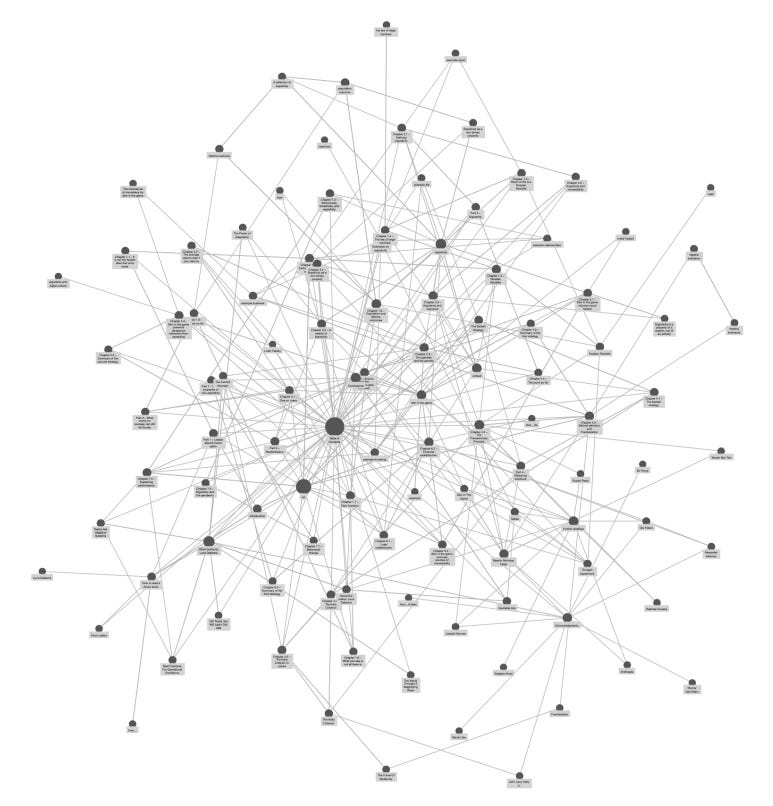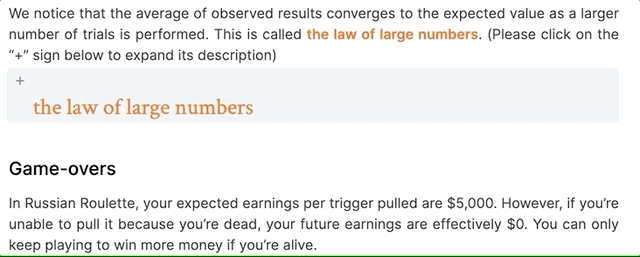Why the future of non-fiction is non-linear
How might we reimagine the medium of a book such that its design lightens the burden of absorbing knowledge?

Books are surprisingly bad at conveying knowledge, and readers mostly don’t realize it.
This bold claim comes from Andy Matuschak’s thought-provoking essay Why Books Don’t Work. When it comes to non-fiction books specifically, there’s an implicit assumption that people absorb knowledge by reading sentences. People often think like they absorb knowledge when they read, but in reality, they usually only have a vague idea of the main arguments or concepts presented in the book.
Why is that? Genuine understanding relies on readers actively engaging with the ideas, which can be really challenging.
Apart from the content of the book, there’s a lot of additional overhead involved that can be mentally taxing. For example, you constantly have to be assessing whether you understood the passage you just read, and if not, whether you should re-read it or consult another text.
How might we reimagine the medium of a book such that its design lightens the burden of absorbing knowledge?
One possibility is to reduce the overhead of memorizing low-level facts. By testing your memory about what you just read at regular intervals, more complex topics like quantum theory might be more accessible. If you’re curious, I’ve previously written about Andy Matuschak’s interactive book based on these principles.
Another possibility is to overcome the constraints of traditional books by reimagining the reading experience as a choose-your-own-adventure. In other words, what advantages are afforded by presenting the ideas in a book in a non-linear fashion rather than a linear narrative?
Luca Dellanna, a seasoned author and consultant, recently published Ergodicity — one of the first books available to read in a non-linear format.

The book was published in Roam Research, a note-taking tool that is structured as a graph of interconnected nodes (or ideas) behind the scenes (more on Roam Research). This is what the book looks like from a graphical perspective:

After reading Ergodicity, I wanted to reflect on the format and reading experience. There are three main features of non-linear books that aid comprehension:
1. Non-linear exploration
While reading, I could sporadically fall into a rabbit hole around a certain topic and end up in a completely different part of the book. This makes the reading experience more like browsing the internet, allowing you to easily navigate at your own pace and to dive more deeply into parts of the book you’re more interested in.
At the same time, the content was poorly suited for this type of exploration because the book only focused on one concept and elaborated on it in different ways. The author included a table of contents to add some optional structure, and I ended up not straying too far from the intended linear flow.
It’s hard to say what kind of books can exploit non-linearity better, but a topic area with more interconnected nodes, like history or science, might feel more rewarding.
2. Contextual information
Ergodicity, the concept explored in the book, is fairly complex and takes some building up to. That being said, it is helpful to have definitions easily accessible. Roam provides many ways for earlier passages to be embedded in-line to avoid duplicate information.

In addition to references, you could instantly look up all instances of the law of large numbers if you wanted to explore all the contexts in which it’s mentioned in the book. This helps you find connections between ideas and see how a concept is applied in different settings, thereby improving your understanding of the book.
That being said, the book could go farther in structuring the arguments and linked references. If you’re curious and familiar with Roam, see Robert Haisfield’s criticism.
3. Naturally extensible
The most exciting aspect of this format is that it can be downloaded and integrated directly into your own graph database on Roam Research. This is the closest thing we have to the common sci-fi trope of downloading information into your (digital) brain.
This is particularly effective because it allows you to make connections to pre-existing knowledge you have stored in Roam Research. This heavily reduces the friction of taking notes and referencing related ideas while you’re reading. This process of making connections is really important for effective understanding (for more on this, see my summary of the book How to Take Smart Notes).
—
All in all, Luca Dellanna’s attempt at a non-linear book was a fantastic effort and sets up the stage for further innovation down the line. I firmly believe that this will be the future of non-fiction books.
Friday Brainstorm Newsletter
For more, join 300+ curious people subscribed to the Friday Brainstorm newsletter. It’s one email a month with the most interesting ideas I've found related to science and health.